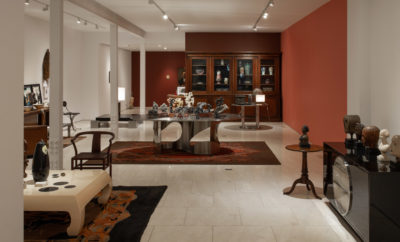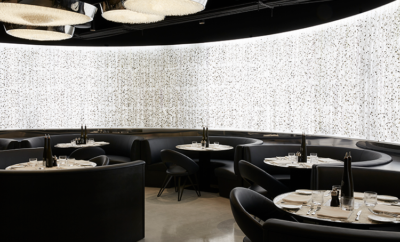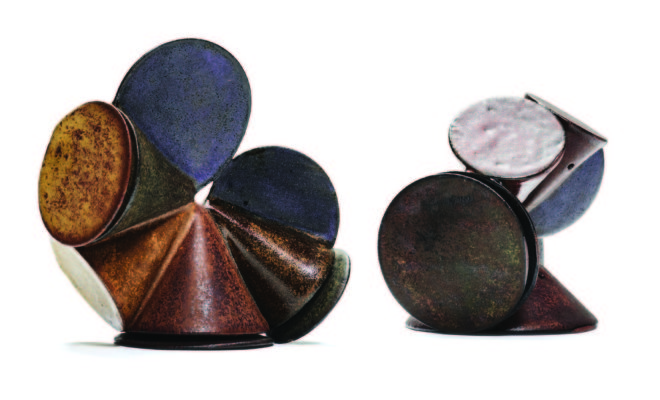 Cones and Disks by Beate Kuhn, 1970, glazed stoneware. ROBERT CASS PHOTO.
Cones and Disks by Beate Kuhn, 1970, glazed stoneware. ROBERT CASS PHOTO.
Design
Agent provocateur
WHEN JASON JACQUES WAS TWENTY-EIGHT years old, he showed up at the Triple Pier Expo in New York with a U-Haul trailer full of pots. He had not previously arranged for a booth; he had just moved back to the United States after five years in Europe. It was all rather last-minute. But he talked his way into a little stretch of wall by the bathrooms, and set up two display cases of art nouveau ceramics. Then he walked around the show, buying up every other pot of that era he could find. He wanted, he says, to “empty the floor.” Anyone interested in buying art pottery would have to come to him. His total initial outlay was more than $50,000, money he didn’t really have to spend, but by the end of the fair he had made that back, and more.
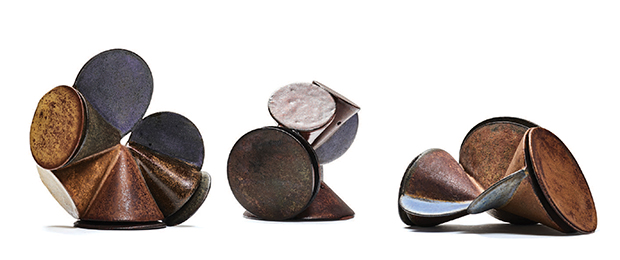
Cones and Disks by Beate Kuhn, 1970, glazed stoneware. All photography by Robert Cass.
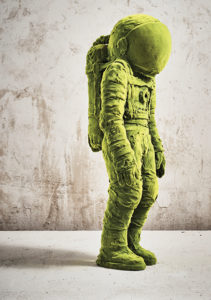
Spaceman by Kim Simonsson, 2017, stoneware and nylon fiber.
He then spent a few years as a picker in Europe. He fell in love with secessionist painters like Klimt, with the proto-modernist designs of the Wiener Werk- stätte, and with Amphora Pottery (established in 1892 in Turn-Teplitz, in the present-day Czech Republic). Periodically he would fly back to the States with a trunk full of ceramics. A turning point was a chance encounter with William Ehrlich, the prominent polymath—architect, real estate developer, jewelry designer, and collector—who became a steady client. The trust between the two men was such that Ehrlich eventually began wiring him funds to buy pots for him sight unseen.
Jacques opened his first permanent gallery, on Elizabeth Street in New York, in 1996. He has been in his current space on the Upper East Side since 2005, and from the beginning, it was lavishly appointed. The first decor had a bright color scheme devised by designer (and founding editor of Nest) Joe Holtzman, with a distinctive blue and white “crackle” ceiling nodding to Delftware. Today, the front hall features a mural portraying historic pots, executed by Trenton Duerksen. The main display area has been refitted with a spectacular all-black interior articulated in steel, by the fabricators Digifabshop, of Hudson, New York. The look is half Peter Behrens, half Batman. A particularly memorable installation shortly after the redesign, in 2016, featured thickly encrusted ceramics by the Danish potter Morten Løbner Espersen, paired with gelatin silver NASA photographs from the 1966-1967 Lunar Orbiter missions.
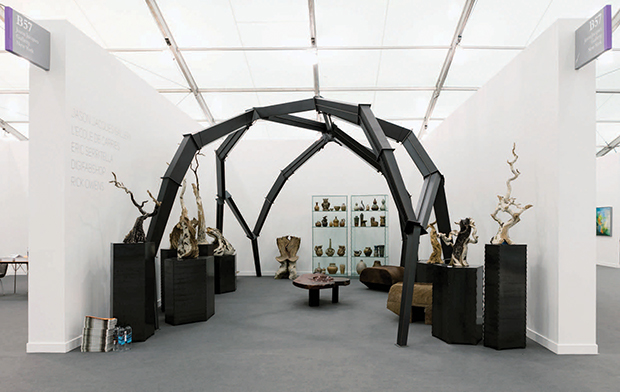
Installation shot of the Jason Jacques booth at Frieze New York 2017.
Espersen is one of eleven contemporary artists who show with the gallery, many of them potters with a clear affinity for turn-of-the-century ceramics. Jacques also shows the furniture of fashion designer Rick Owens and lime-green flocked figures by the Finnish sculptor Kim Simonsson. Jacques’ contemporary program began in 2010, after he discovered the work of British artist Gareth Mason in a show in Zurich. Everything else in the gallery, as Jacques remembers it, was “very Swiss in its precision.” Mason’s pots, by contrast, surge with nearly uncontrolled, alchemical energy—lumpen and asymmetrical and streaming with wildly combined colors. They are reminiscent of great works by Taxile Doat, Pierre-Adrien Dalpayrat, Ernest Chaplet, Georges Hoentschel—the historic art potters Jacques prizes most.
Jacques has expanded his presence at art fairs, where his booths, again executed in partnership with Digifabshop, make the typical white-walled art fair presentation look fainthearted. The first of these I saw in person, at Design Miami in 2013, consisted of a series of curved ramps propped up on scaffolding; the pots seemed to be bobsledding. Subsequent displays in Miami included a “treehouse space” featuring the trompe- l’oeil sculptural ceramics of Eric Serritella, and, in 2016, a series of monumental timber towers with jagged-edged metal corners. At Frieze New York 2017 he displayed his wares underneath a set of crisscrossing segmented black arches, evoking a Louise Bourgeois spider or an attack robot from The War of the Worlds.
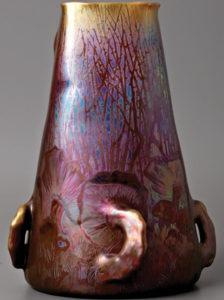
Magical Mushroom vase by Clément Massier, c. 1900, earthenware.
Jason T. Busch, who joined the gallery as director in spring 2017, has proposed mounting a show to mark Jacques’ thirty years of collecting. Busch is a supremely elegant and knowledgeable curator, whose track record includes stints at the Carnegie Museum of Art in Pittsburgh and the Saint Louis Art Museum. His decision to team up with Jacques makes a fascinating pairing of opposite personality types—Diony-sius and Apollo joining forces—and is further evidence of the increasing porosity between the museum and commercial sectors.
Given the increasingly straitened circumstances of many public institutions and the seemingly infinite expansion of the art market, it is not surprising that curators as talented as Busch are turning to the market for some of the most engaging action. The decorative arts scene has many fine people in it, but all too often, runs low on raw energy. Whether or not one shares Jacques’ taste for the immaculately overwrought (I myself happen to love it), the gallery is certainly never going to be boring. He may have left his U-Haul days behind, but you still never know quite what to expect.


